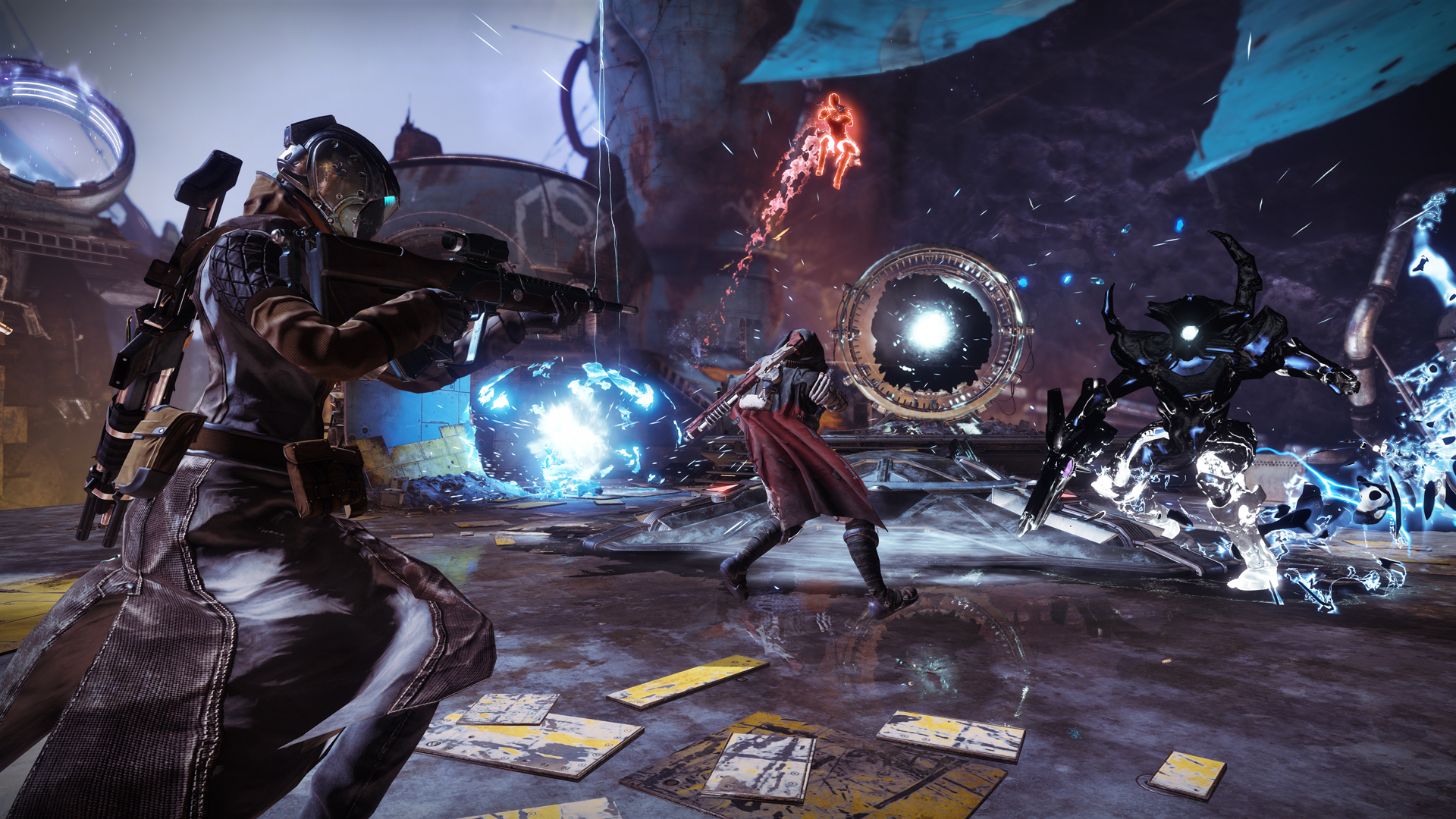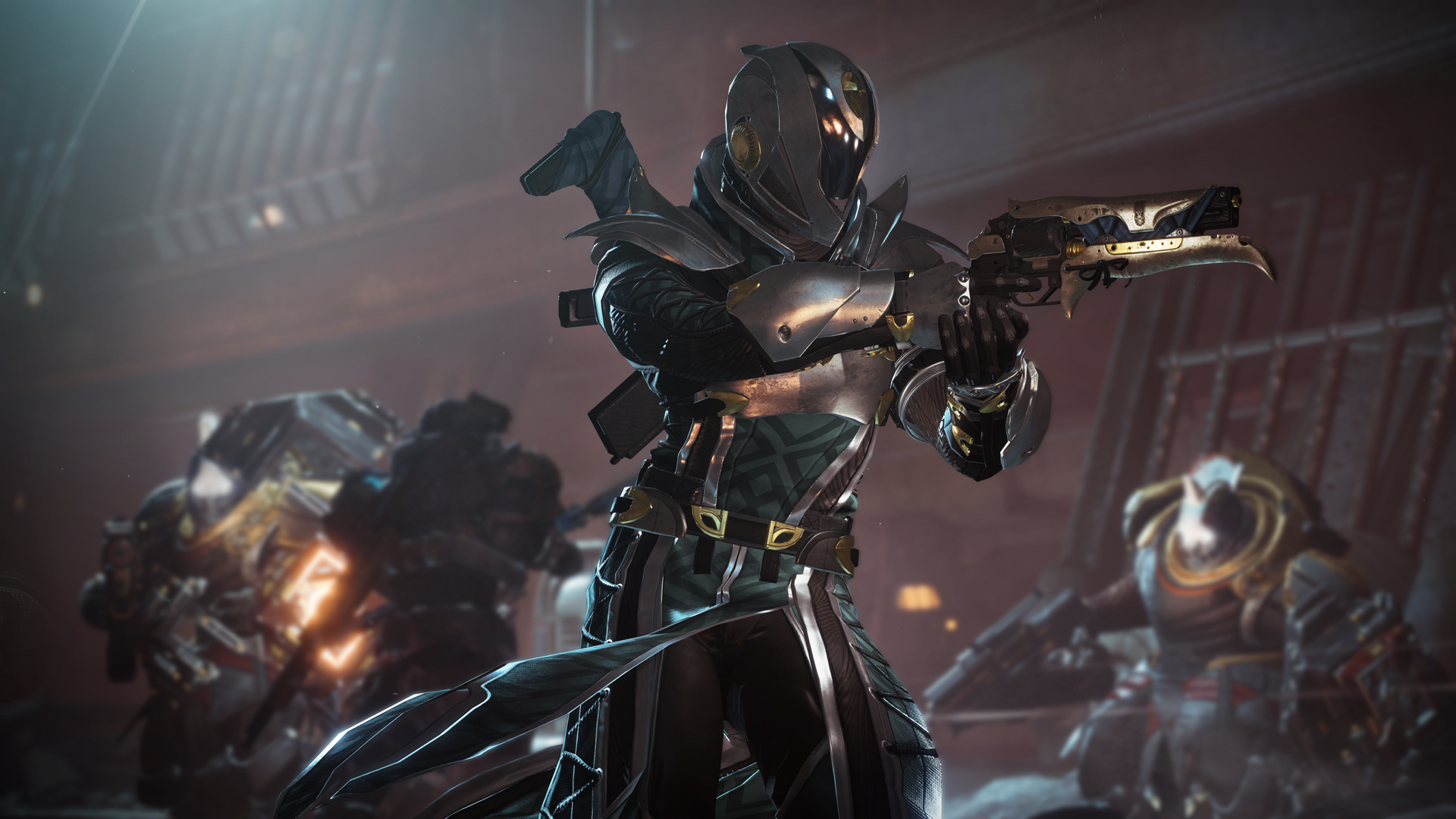The future of PvP: how Destiny 2's Gambit invented a new game mode
This week, we're talking about the future of competitive multiplayer.

In the first of three features about the future of PvP, Alex Wiltshire speaks to Bungie about the creation of Destiny 2's new mode, Gambit. Look out for the other two parts, focusing on different games and developers, on Tuesday and Wednesday.
PC is the home of competitive first-person shooters. It's where Doom and Unreal Tournament originated. It's where modders created Counter-Strike, Team Fortress and the battle royale. Each generation of PvP game has captured the talents of millions of players, as well as the ambitions of thousands more developers and publishers, and every one of them has an eye on what comes next.
With the battle royale having claimed supremacy over the form, what is the future of PvP? If we truly knew, we'd probably be making it and planning how to spend the proceeds. And in our quest we've realised that some of the traditional spawning grounds for new PvP games, such as the modding scene, Garry's Mod, Minecraft and Roblox, don't seem as fertile as they once were.
But we can guess in some of the directions the shooter PvP appears to be going, and talk to some of the creators of new PvP games about the challenges that they face in reinventing one of gaming's most exciting and dynamic arenas.
In early 2017, months before it even came out, Destiny 2's co-game director Christopher Barrett asked his development team to start thinking about designing an end-game mode which would blend competitive play with PvE. A bit like the exacting team-based PvP modes Trials of Osiris and Iron Banner, but played against Destiny's Cabal, Fallen, Taken and Hive.
Bungie's team ended up making Gambit, which launched with Destiny 2's Forsaken expansion in September. It's original, intense and strategically complex, so much so that you can imagine it having a life outside Destiny's sandbox, inspiring new games that also bridge PvE and PvP.
Here's the basic setup: two teams of four play in entirely separate but identical arenas. In the middle of each is a bank where players deposit motes which drop from AI enemies that spawn around the map. The object is to bank 75 motes, whereupon a Primeval boss appears. The first team to kill its Primeval wins the round.
Keep up to date with the most important stories and the best deals, as picked by the PC Gamer team.
So that might sound a little familiar to Titanfall 2 players, but there are wrinkles, and it's in the wrinkles that Gambit comes alive. As you might expect, it took a lot of imaginative leaps and experimentation for Bungie's team to find them, since they weren't following any existing template.
"We went to having a couple of teams, and let's start having them do something, but we didn't know what," initial design lead Lars Bakken tells us. "Shoot enemies? Quickly, we found that we wanted the teams to have equal opportunity in separate arenas, so they don't interact but they know the other team exists."
But Lars and his developers were struggling to make each team feel the impact of the other. Slaying AI was fun, but the real opponent should be the opposition. They tried placing a glass wall between the two arenas to make players more aware of what was happening on the other side, but no one had time to look through it.
Then Robbie Stevens, who is currently Gambit's design lead, came in one morning with an idea. "I looked at Lars and said, 'I really think we need players to shoot each other.'"
This was the genesis of invasions, a mechanic by which once a team has earned enough motes, one player can jump through a portal and has 30 seconds to attack the other team. Bungie quickly got an implementation running, teleporting players between arenas with a debug command, and immediately saw the difference.
"It shifted the direction of the mode," says Stevens. Invaders could kill players carrying lots of motes and set their whole team back. "Players were not just thinking about slaying PvE enemies but also teamplay. Before it was a relay race of banking motes, and then it became about the risk-reward of how many motes to hold on to before invaders came in and wiped the board."

Then a second wrinkle came in: blockers. By banking either five, 10 or 15 motes at a time, a player can send enemy AI to the opposition's bank, shutting it down until they're defeated. This was initially planned to help prevent the tendency for one team to get a lead and then snowball ahead, but it had more advantages.
"It makes me feel awesome to have 10 or 15 motes," says Bakken. "It connects me to both my team and opposition. We started talking about losing every mote when you die to make players understand they have to grab these things and hold them as a precious gift."
The result is a game mode in which team tactics are everything, and in which there are multiple answers for every situation. If the opposition is holding lots of motes, maybe that's a good time to invade. Or maybe it's a good time to send lots of blockers across. Or maybe they'll do the same to you.
We're creators. If our game inspires others to do similar, that's awesome. I'd feel like we accomplished something
Bungie's Lars Bakken
Gambit's delicate balance of PvP and PvE is a direct result of the fact that Gambit's team comprises developers from both areas of the game. Bakken has long led Bungie's PvP design from Halo on, and Stevens led Destiny's Strikes, which are PvE mini-dungeon runs.
And besides internal inspirations, they also came from outside. Stevens is happy to recognise that the AI act like a MOBA's creeps, that the way teams' mote counts are represented by bars that stretch across the top of the screen came from fighting games, and that the social face-off at the start of rounds was partly inspired by PUBG's plane and lobby area.

Still, Gambit is very much its own game, with a set of defining rules that players have to understand. All innovative game modes face the challenge of teaching new players, and throughout its development Gambit faced pushback from people in publishing and user research, who were worried that playtesters continually said they didn't get it.
"It was a struggle but the team had been playing it for months and we knew that the game pays dividends when you understand the basics," says Bakken. "We didn't want to water down aspects because that would hurt its long-term viability."
Gambit‘s announcement at E3 this year featured four key words that define how it works—fight, collect, bank, invade—and they provide a useful foundation for understanding how it works. But Bakken knew that only playing it would fully get its qualities across.
"You struggle as a developer, knowing how to reach players," he says. "At some point you draw a line, and you hope enough people will give it a chance and get sucked in." But he felt confident: most established multiplayer games are complicated and yet they're played by tens of millions who didn't mind getting over the hump of a new experience.
Gambit is deeply set in Destiny 2's greater sandbox, of movement, enemy design and gunfeel. But it feels like its essentials could be incorporated into other games. And if they are, Bakken and Stevens wouldn't mind a bit. "I'd be flattered," says Bakken. "We're creators. If our game inspires others to do similar, that's awesome. I'd feel like we accomplished something."
After all, copying is the natural cycle for a great new PvP game. "Yeah, and if other companies do it they might throw in new ideas, and that might inspire us to do something else," says Stevens. "We're excited to see what people do. Competition is healthy. No one in the studio sees imitation as taking away from us."

